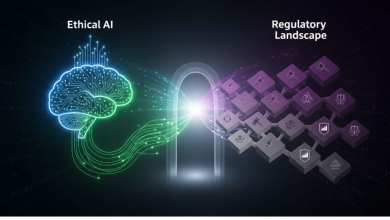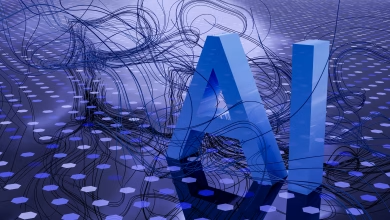A logo is more than decoration. It is psychology in visual form. Shapes and colors decide how people feel about a brand before they ever read its name. Circles feel friendly, squares feel stable, and colors like red or blue instantly spark emotion.
This connection between design and emotion is what we call logo psychology. Every successful brand uses it to make people trust, remember, and relate to them faster.
In this article, you will learn how color and shape influence perception, how brands apply these insights, and why the smartest businesses use design psychology to create logos that stay in people’s minds.
Why Psychology Matters in Logo Design
Every strong logo begins with psychology. The brain processes visuals faster than words, which means shapes and colors decide how people feel before they even think.
A logo that feels trustworthy, exciting, or modern is never random. It is shaped by logo design psychology, the science of using design to trigger emotional responses.
Colors influence emotion
- Blue conveys trust and reliability
- Red represents power and energy
- Green suggests growth and balance
- Yellow brings optimism and warmth
Shapes define character
- Circles feel inclusive and friendly
- Squares create stability and strength
- Triangles signal innovation and focus
These visual cues quietly shape perception, guiding how audiences remember and connect with a brand. Businesses that apply this understanding create logos that communicate instantly, build trust naturally, and stay in people’s minds longer.
Color Psychology in Logos
Color is the fastest way to connect a brand with emotion. Before people read or listen, they already feel something based on the colors they see. This reaction forms the foundation of color psychology in logos, which studies how different hues influence perception and decision-making.
What colors communicate
- Red shows passion, confidence, and urgency.
- Blue reflects reliability, calm, and trust.
- Green conveys growth, health, and balance.
- Yellow brings optimism and clarity.
- Black and white represent sophistication and simplicity.
A professional logo design company studies these responses before selecting a palette. The goal is not just to make a logo look attractive but to make it feel right for the target audience. Each color must fit the brand’s purpose and emotional tone.
Cultural context also matters. Red represents good fortune in China but danger in Western cultures. Blue feels trustworthy in finance, yet too cold for children’s brands. Knowing these variations helps brands connect globally without confusion.
Colors chosen with purpose create emotional clarity. They make a brand recognizable, memorable, and consistent across every platform and audience.
Shape Psychology in Logos
Shapes tell stories without words. The form of a logo influences how people interpret a brand’s character, values, and behavior. This concept, known as shape psychology in logos, helps designers create visuals that instantly feel familiar or inspiring.
How shapes influence emotion
- Circles express unity, motion, and friendliness.
- Squares and rectangles suggest reliability, stability, and strength.
- Triangles show progress, focus, and ambition.
- Curved or organic shapes give a sense of creativity and warmth.
- Abstract shapes indicate modern thinking and innovation.
Experienced logo design agencies study these psychological effects when shaping visual identities. A financial brand might use squares to signal security and trust, while a fashion startup may prefer curves to appear modern and approachable.
When paired with color, shapes multiply impact. A circular logo in blue feels calm and dependable, while a red triangle feels bold and energetic. These subtle visual cues help audiences sense a brand’s personality before they even know its name.
Using geometry with intent turns a logo into more than a symbol. It becomes a silent communicator that builds recognition, emotion, and credibility all at once.
The Power of Combining Shape & Color
Color sets emotion. Shape gives it structure. When both align, a logo becomes instantly memorable. The mix of shape psychology in logos and color psychology in logos creates a visual identity that speaks faster than words.
Why the combination matters
- Color captures attention while shape defines meaning.
- Blue circles convey calmness and community.
- Red triangles express energy and movement.
- Green squares suggest stability and growth.
Each combination forms a different emotional fingerprint. Changing either element can completely shift perception. For example, a yellow triangle feels playful, while a black triangle feels strong and assertive.
Great designers test these variations to find balance. They study how form and color work together to guide human emotion and memory. The right mix gives brands instant recognition, clarity, and trust.
Logos that achieve this balance do not need extra decoration. Their psychology does the work.
How Professional Agencies Apply Psychology
Design backed by psychology is not guesswork. It follows research, testing, and strategy. The most experienced logo design agencies apply principles of perception, emotion, and cognition to create logos that stay consistent across audiences and platforms.
How professionals work with psychology
- Audience analysis helps identify how people interpret shapes and colors based on age, gender, and culture.
- Color mapping links hues with emotional goals like trust, speed, or creativity.
- Shape exploration finds geometry that matches the company’s personality and market.
- Testing and feedback reveal what combinations connect best before finalizing a design.
A good agency also understands that brand psychology is long-term. The same design must evoke similar feelings on a website, a billboard, and a mobile screen. Consistency builds recognition, and recognition builds loyalty.
Choosing a trusted logo design company gives businesses an advantage. It provides access to creative teams who combine psychology, design, and data to create visual identities that stand out, build emotion, and strengthen brand value.
Common Mistakes in Color & Shape Choices
Many brands treat logo design as art instead of communication. This mindset leads to errors that weaken recognition and trust. Understanding what not to do is as important as learning what works.
Frequent mistakes to avoid
- Too many colors make the design confusing and difficult to reproduce across platforms.
- Poor contrast hurts readability and visual clarity.
- Conflicting shapes send mixed messages about the brand’s tone and purpose.
- Ignoring accessibility overlooks audiences with color blindness or visual limitations.
- Following trends blindly results in logos that age quickly instead of lasting years.
Strong visual branding depends on restraint and intent. A balanced logo uses color harmony and shape clarity to create an image people can recognize instantly.
Good design communicates emotion without noise. When brands respect the psychology behind visuals, their logos remain timeless instead of temporary.
Real-World Examples: Logos That Get Psychology Right
The best way to understand design psychology is to see it in action. Many global brands have built their identities around the strategic use of shapes and colors that reflect their values and emotions.
Coca-Cola
- Uses red to evoke energy, excitement, and joy.
- The flowing script and curved lines create warmth and friendliness.
FedEx
- Combines purple and orange to balance reliability with speed.
- The hidden arrow between the letters E and X reflects direction and precision.
Spotify
- Green symbolizes creativity and growth.
- The circular shape conveys motion and community, matching the brand’s focus on sound and connection.
Airbnb
- The soft pink tone brings comfort and approachability.
- Its abstract shape combines elements of a heart, a location pin, and an A, blending emotion with simplicity.
Each of these logos uses color psychology in logos and shape psychology in logos to send a message instantly. They prove that design is not decoration; it is strategy. Brands that apply these same psychological principles connect with audiences faster and stay relevant longer.
Turning Psychology into Brand Power
Every strong logo begins with an understanding of how the human mind reacts to visuals. Colors create emotion. Shapes define meaning. When both work together, they build trust, recognition, and loyalty faster than any tagline.
Color psychology in logos helps brands decide how they want people to feel. Shape psychology in logos gives those feelings structure and direction. Combined, they create a visual language that speaks instantly to the audience.
Partnering with a professional logo design company or expert logo design agencies gives businesses an advantage. These specialists study behavior, culture, and perception to design visuals that connect on a deeper level.
A logo built on psychology is not decoration. It is a strategy. It becomes a brand’s emotion, voice, and first impression every time it appears.




